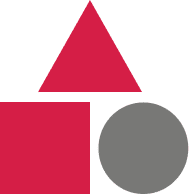Whether entering a new market, transitioning to value-based sales, or simply trying to maximize your current results, your first step is ensuring the right strategy.

Engage Selling helps businesses develop and validate their sales strategy to ensure business objectives are met. We are sales process and methodology agnostic, adapting to your environment to provide recommendations for immediate and lasting results. Get in touch with us to discuss your objectives.

Do I have the right structure?
Organization
Reporting structure and roles that are tuned to the organization, target prospects and team strengths.
Job Profiles
Definition and assessment of skills, knowledge, and experience requirements for current and prospective team members.
Environment
Physical location and working environment designed to optimize performance.
Territory Design
Mapping target prospect location and characteristics to team structure and individual responsibility.

Do I have the right sales process?
Prospecting
Identifying prospective customers using multiple channels including leveraging phone, networking, social media, and influencer strategies.
Qualification
Determining if prospects represent opportunities to be pursued based both on general and business-specific qualification criteria.
Solution Development
Identifying prospect needs and developing a solution that articulates value, meets technical requirements, and includes value-based pricing.
Closing
Finalizing deals including negotiation and objection handling strategies.
Account Management
Leveraging existing account relationships for up and cross sell opportunities as well as referrals.

Am I optimally managing performance?
Compensation
Aligning desired business and revenue results with compensation.
Pipeline Management
Reporting mechanisms that provide accurate representation of the current status of opportunities.
Key Performance Indicators
Specific activity-based metrics to set expectations and measure individual performance.
Coaching
Deal and pipeline coaching of team members to improve individual performance.

Is my team armed for success?
Sales Tools
Tools to reinforce sales desired sales techniques including sales scripts, objection handling guides, buyer value profiles, etc…
Sales Training
Initial and on-going development of skills and knowledge with accountability for individual implementation.
Rollout Plan
Activities and milestones to implement new or updated sales strategy.


